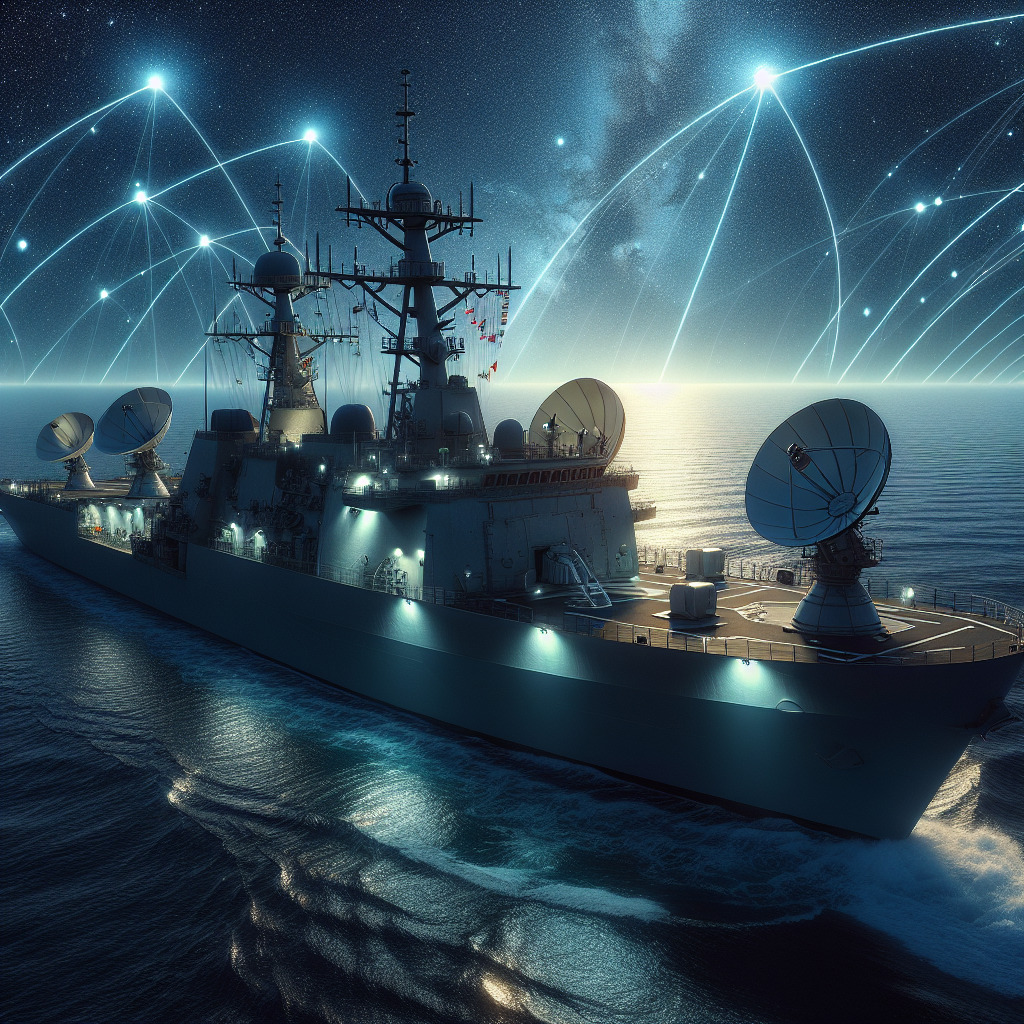Key Takeaways
Introduction
The adoption of Elon Musk’s Starlink satellite constellation by the US Navy marks a significant leap in enhancing connectivity on naval vessels. Spearheaded by the Sailor Edge Afloat and Ashore (SEA2) project, this initiative aims to improve both personal and tactical communications at sea. This blog post dives into the key aspects of this innovative endeavor and its potential impacts on Navy operations and sailor morale.
Life on US Navy Warships
Serving on US Navy warships often means sailors face stress, boredom, and loneliness due to prolonged separations from family and limited port calls. While military life has its unique challenges, one of the biggest hurdles for sailors is staying connected with loved ones back home. The introduction of high-speed internet via Starlink can significantly alleviate these issues by enabling real-time personal communications, offering a much-needed boost to sailor morale.
Starlink Implementation
The Naval Information Warfare Systems Command (NAVWAR) has been pivotal in the testing and integration of Starlink systems on Navy ships. Noteworthy installations include the aircraft carriers USS Abraham Lincoln and USS Gerald R. Ford. These installations offer an impressive median internet speed of 30 to 50 Mbps, which can be scaled up to 1 Gbps with additional antennas.
The SEA2 initiative utilizes the Satellite Terminal (transportable) Non-Geostationary (STtNG) to leverage commercial satellite constellations like Starlink and Eutelsat OneWeb, ensuring continuous internet service. This integration is crucial for maintaining uninterrupted communication both for personal use and mission-critical operations.
Morale and Operational Benefits
Enhanced internet access allows sailors to engage in personal activities such as online classes, paying bills, and streaming live events. These activities contribute significantly to their quality of life, thereby boosting overall morale. Moreover, enhanced connectivity supports crucial tactical and business applications, offering faster and more reliable communications. This technological advancement is expected to positively impact recruitment, retention, mental health, and mission efficiency.
Security and Challenges
Despite the numerous benefits, the integration of Starlink into the Navy’s systems raises several security concerns. Cybersecurity risks and hardware vulnerabilities are among the primary issues. Additionally, the reliance on a commercial satellite service for highly classified tactical operations presents another layer of complexity. The Navy is currently addressing these challenges to ensure that the integration of commercial satellite technologies does not compromise information security.
Broader Military Adoption
The Navy is not alone in exploring the benefits of Starlink. Both the US Space Force and the Army are also investigating how to integrate these commercial satellite options into their communication infrastructure. For instance, the Space Force has signed a $70 million contract with SpaceX for global and best-effort satellite services. Meanwhile, the Army is assessing new commercial satellite options to enhance their command and control systems.
Elon Musk’s Influence
Elon Musk’s direct involvement with Starlink has raised questions about the influence of a private entity on military operations. Previous incidents, such as Musk’s refusal to activate Starlink for a Ukrainian military operation, highlight the critical nature and potential risks of relying on privately-owned satellite services. While Musk’s innovative technology offers unprecedented advancements, it’s crucial for the military to weigh the benefits against the vulnerabilities associated with such dependencies.
Conclusion
In conclusion, the inclusion of Starlink in the US Navy’s communication systems stands as a transformative step towards modernizing internet capabilities at sea. While it offers significant benefits in terms of connectivity and morale, concerns around security and dependency on a private firm remain. The SEA2 initiative is a pioneering effort to bring the next generation of internet services to sailors, enhancing both their personal lives and operational efficiency. As the Navy continues to refine this integration, the broader implications for military communications and overall mission success are both promising and cautiously optimistic.




